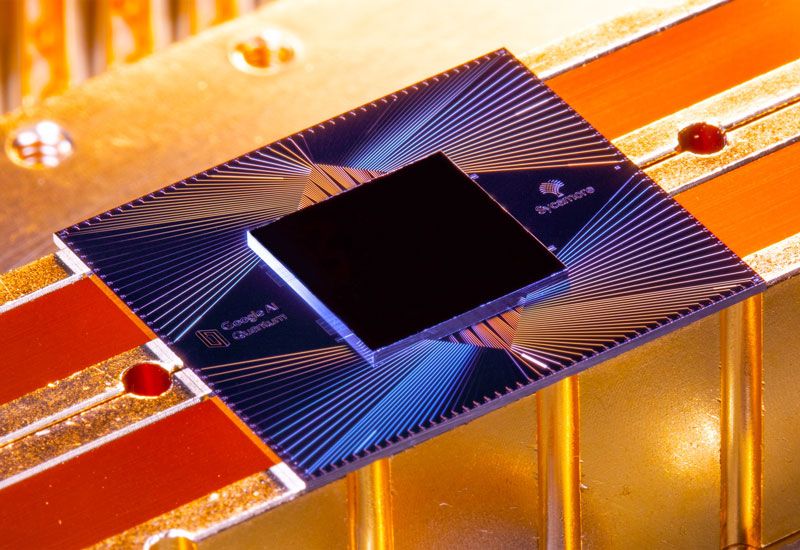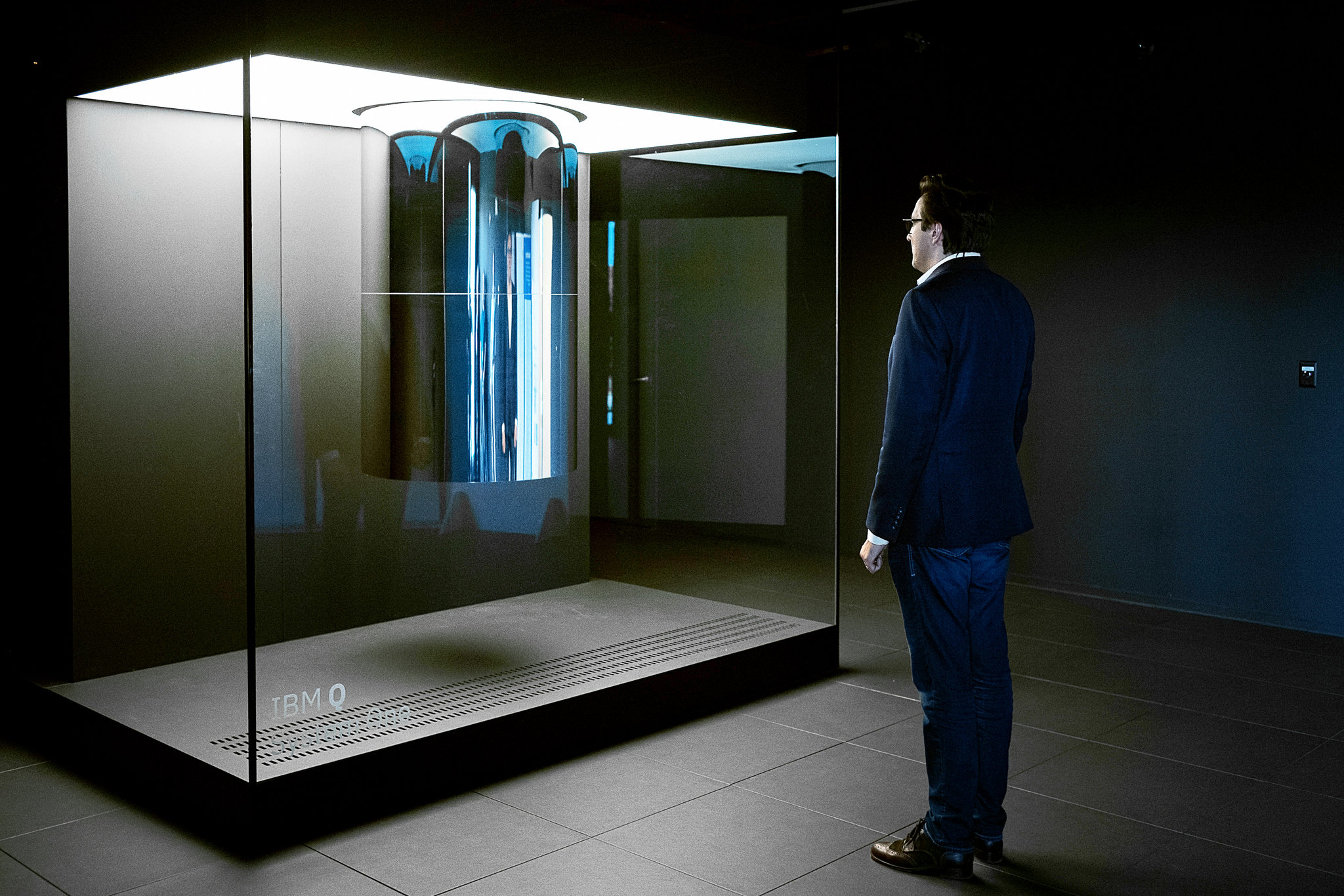A Week of Breaking News in Quantum Computing
October 28, 2019
|
This past week members of the Initiative at Northwestern for
Quantum Information Research and Engineering
(INQUIRE)
made presentations to the Faculty and Administration on frontiers in
Quantum Information Science (QIS) at the Lawrence Dumas Domain Dinner
on October 21. Professors Michael Wasielewski, James Sauls, Prem
Kumar, Danna Freedman and Mark Hersam highlighted the challenges in
QIS and Northwestern’s expertise in Quantum Computing, Quantum
Communication, Quantum Sensing and Quantum Materials. Presentations
by the INQUIRE team are available at this URL:
http://eolus.phys.northwestern.edu/QIS.html
.
|

|
|
This week has also been full of news on Quantum Computing. A
landmark paper was published in Nature on October 23
[
link]
reporting ``Quantum Supremacy’’ by a quantum computer with 53
superconducting Transmon Qubits, performing computations in about two
and a half minutes that are projected to take 10,000 years on the
powerful Summit Supercomputer at Oak Ridge National Laboratory.
Quantum computers gain advantage by performing computations using the
intrinsic parallel computational nature of entangled Qubits.
|
The Sycamore chip is composed of 54 qubits, each made of superconducting loops. Nature, Credit: Erik Lucero
|
|
As is perhaps fitting for results obtained in the quantum limit,
Google’s report of Quantum Supremacy is not without uncertainty.
IBM-Q weighed in even prior to the Google’s Nature article in an
IBM
blog post, based on a pre-publication version of the
Nature article. That was immediately followed by a report published
in the New York Times, Science Times article ``Quantum
Computing Is Coming, Bit by Qubit’’. IBM is
fully committed to R&D on Quantum Computing, but injected caution
into the Google claim of Quantum Supremacy. IBM argues that a
different classical algorithm, if run on the Oak Ridge Summit
machine, would perform the same calculation in 2 and a half days, not
10K years. There is much to be done in testing and verifying the
Google AI report, but even if IBM’s algorithm is correctly
benchmarked, the Google result, if verified, is a landmark
achievement, i.e. 1000-fold increase in computational speed over the
best Supercomputer in the US by a quantum computer with only 53
Qubits!
|

|
|
The National Science Foundation issued a short press release in
response to the Google article on "Quantum Supremacy"
published in Nature
[Link].
The key message from NSF was this: "As quantum research
continues bridging theory to practice across a range of experimental
platforms, it is equally important that NSF, other agencies, and
industry invest in the workforce developing quantum technologies and
the countless applications that will benefit all of society.
Together, we will ensure continuing U.S. leadership in quantum
computing." This was also a central message highlighted in the
presentations from the INQUIRE team at the Quantum Domain Dinner.
|
Dario Gil, director of IBM Research, standing in front of the IBM Q System
One quantum computer. It is sealed in a cube of black glass to keep
in the cold and seal out the universe of noise and interference.
Science Times, Credit: Misha Friedman for The New York Times
|
More announcements followed throughout the week.
On Tuesday, President Trump announced the
resurrection of PCAST, with appointments of two
experts in QIS: (1) Birgitta Whaley, professor of chemistry at the UC
Berkeley, noted for her contributions to “theoretical understanding
of quantum nanoscale phenomena, especially in superfluid helium
droplets, and to control of decoherence in quantum information
processing.” She currently is co-director of the Berkeley Quantum
Information and Computation Center, which she established in 2004.
(2) Dario Gil is director of IBM Research. Prior to assuming that
position, he led IBM’s AI and quantum computing research groups. He
is featured in a New York Times article this week on corporate
research efforts in quantum computing.
The CEO of Rigetti computing published an
article in the Washington Post
on Friday, October 25 acknowledging the Google AI report as a ``landmark scientific
achievement that signals the beginning of a new era in the computing
industry’’, as well as outlining a ``Road Map'' for the future
development of Quantum Computing with the immediate need for (1) more
and better algorithms designed ‘’to harness the unique
problem-solving properties of quantum computers’’, (2) convenient
cloud access to today’s quantum computers for developing new
algorithms, and (3) finally, ``because quantum computing will
eventually have staggering capabilities, the United States must
ensure that it maintains another kind of quantum supremacy, i.e. over
rival nations’’. The
National Quantum Initiative
, signed into law late last year,
provides more than $1.2 billion to advance the research and
development of quantum technologies via NIST, NSF and the DOE,
signals the importance of this technology to national security and
economic growth. It is worth noting that while the US is at the
beginning of a new age in computing and information processing based
on the power of quantum processors, our starting point in terms of
the technology base and infrastructure - from turn-key
cryogenic platforms to nano-fabrication – is first class.
The American Physical Society news journal "Physics"
published an article on October 21 just prior to Google’s
announcement in Nature, titled ‘’
Waiting
for the Quantum Simulation Revolution’’. Quantum
Computers may have their biggest and most immediate impact on the
"simulation of quantum systems with a quantum computer" -
the application Richard Feynman envisioned. In the case of quantum
simulations, the algorithm is generated by the Hamiltonian of the
physical system, and there is no shortage of complex systems whose
Hamiltonian is known but whose properties are beyond the power of the
most powerful supercomputers. Quantum computers could revolutionize
our understanding of of strongly interacting electronic and magnetic
materials with applications spanning fundamental discovery of new
materials, drug discovery, to chemical reactions and catalysis.
It has been an exciting week for QIS, with a watershed moment in the
quest to realize the potential of computing machines built to take
advantage of the rules of quantum mechanics. There is every reason to
expect new discoveries and announcements in the near future. The
National Quantum Initiative will set an agenda for QIS research
nationally. For Northwestern this is an opportunity to build on
existing research programs and expand education and training in QIS
with the goals of new discovery and the education of the next
generation of leaders and workforce in QIS.
Finally, the potential for societal impact of this technology is
enormous. But, if there is any lesson to heed from past technology
revolutions it is this: the range of impacts of a transformative
technology is hard to predict … and even harder to manage. Looking
ahead the key question, beyond the un-solved problems at the
frontiers of science that will be opened up by Quantum Computing, may
well be ``how does the US, our allies and rivals manage the use of a
fully developed quantum computing technology?’’
Jim Sauls
Department of Physics and Astronomy
Center for Applied Physics and Superconducting Technologies

